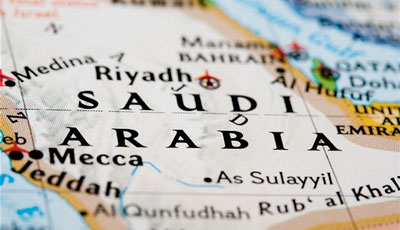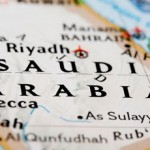Meet the new Saudi Arabia, nothing like the old Saudi Arabia

After years of building a glut, the world’s oil industry by the end of this year is expected to stop overproducing more crude than the world can use.
But analysts say one wild card in that equation is Saudi Arabia — the producer that at one time was most likely to bring balance to the world oil market, using the flexibility of its spare capacity. That role has changed and so has that country’s mission, as it attempts to transform its economy and oil industry into a global financial force, not just a force in world energy markets.
“We should start thinking about Saudi Arabia as producing more like an oil company would,” said Citigroup energy analyst Eric Lee. “They have some of the cheapest, lowest-cost oil production in the world so they would hope to develop that and invest in that.”
Saudi Arabia sent a powerful message this past weekend when longtime Oil Minister Ali al-Naimi, 81, was removed by royal decree and replaced with former Saudi Aramco CEO Khalid al-Falih, viewed as a capable technocrat who will reflect the views of Saudi Deputy Crown Prince Mohammed bin Salman. The deputy crown prince has released his “Vision 2030” plan for economic reform, and Saudi Aramco’s public offering next year is a centerpiece of that plan.
Favorite son of King Salman, bin Salman is responsible for the military and the overall economy, a large part of which is the oil industry. His plan is to monetize the oil sector to invest in other areas and diversify the Saudi economy. He wants to build a $2 trillion sovereign wealth fund that would dwarf others.
Al-Naimi, 21 years in his role, was long the face of Saudi oil and represented the kingdom’s position as master swing producer and the lead player in OPEC. Saudi Arabia, however, already stepped away from that role when it pushed the cartel to let market forces set prices in November 2014, instead of by adjusting production.
That policy crushed crude prices and resulted in the shakeout of high-cost producers. For one, the U.S. shale industry has been seriously wounded, and analysts expect that will continue with more production shutdowns and bankruptcies possible. The U.S. is producing about 500,000 barrels a day less than it was a year ago.
Analysts see the “rebalancing” of the oil market leading to a higher crude price by the end of the year, even if there is another period of decline before that. One of the factors influencing the market on the supply side has been the return of Iranian oil to the market, and also the fact that Russia and Saudi Arabia have continued to produce at high levels even in a low-price environment.
However, there also have been unforeseen outages in Nigeria, Libya and even in Canada, where forest fires are temporarily disrupting as much as a million barrels a day of production.
“It’s a paradox. On the one hand, there’s continuing oversupply in the market, and on the other hand, it’s a rather tight market. There are pockets of disruption all around the world, and of course the potential big one is Venezuela,” said Daniel Yergin, vice chairman of IHS.
“Our expectation for the second half of the year is that prices will sort of orbit around $50 a barrel,” Yergin said. IHS had previously expected a $48 price for Brent.
The outages equaled about 2.5 million to 2.7 million barrels a day, according to Michael Cohen, head of energy commodities research at Barclays. Cohen last week raised his forecast for oil prices to $44 per barrel for Brent this year, an increase of $5 because of the rebalancing of the market.
However, he says if the wall of oil that’s offline comes back online quickly it could mean a period of lower prices before crude moves higher to the low $50s in the fourth quarter.
As for the Saudis, bin Salman recently said the kingdom could ramp up production by about a million barrels a day to 11.5 million immediately, and it could also get to 12.5 million barrels a day in the next six to 12 months, if it wants to. Bin Salman also said in an interview with Bloomberg that Saudi Arabia could increase to a maximum of 20 million barrels a day if it invested in its industry.
Yergin pointed out that one of the first comments made by Al-Falih after his appointment was that Saudi Arabia intends to continue supplying current customers and increasing volumes of oil to the markets.
“They’re really going to let the market drive things, and their great advantage is they are the low-cost producer of great scale,” he said. “I think the days of cutting back production and the coordination with other producers, those days are over.”
“The last thing they want to do is throttle back production and make room for other producers and in particular they don’t want to make room for Iran,” said Yergin.
Citigroup analysts said al-Falih’s speeches are in line with the Saudi government’s policy to increase market share. The analysts, in a note, said there’s little chance Saudi Arabia would agree to a production freeze at the upcoming OPEC meeting June 2 or anytime soon.
“Rather what can be expected is fulfilling the logic of running an oil company. That means continuing if not accelerating the strategy he started while Aramco CEO. This would involve increasing international and domestic downstream investments, assuring a growing market share based on growth of the country’s production capacity, based on its vast reserves,” they wrote.
Accordingly, there should be a clear push by Saudi Arabia for higher production and exports in coming months and years, the Citi analysts said. They are also watching for signs of any increased downstream investments or expanded drilling within the kingdom.
On Tuesday, Amin Nasser, CEO of Saudi Aramco, said at a news briefing that the company is likely to boost its production this year to meet rising demand. “We’re seeing a global increase in demand,” Nasser said. “We are meeting that call on us.”
It’s not clear, however, how much Saudi Arabia will increase production.
“They realize there’s a rebalancing taking place. In the grand scheme of things when they’re sitting on so much oil in the ground and they see a future that might not be that bright for oil. They might want to just get it out sooner rather than later,” said Lee.
“You have the rhetoric. Then you have the actual intentions. Then you have what they’re going to implement and whether they can implement. The rhetoric seems to be in line with the intentions,” Lee said.
Francisco Blanch, head of commodities and derivatives research at Bank of America Merrill Lynch, said the world could see its first deficit in oil in several years by the end of 2016. He expects to see crude prices fall off again in the third quarter, after summer driving season, but he says they should pick up again in the fourth quarter and head to the $50s per barrel.
“At the end of the day, the market is rebalancing so we still believe in higher prices by year-end. I’m just concerned about the seasonal dynamics, and … you’re in the seventh inning of this game, and the Saudis probably don’t want to stop.”
The Saudi goal of letting the market set the oil price was about maintaining its market share against other producers. Blanch said it’s not clear how much market share Saudi Arabia is after.
“We are calling for $59 a barrel WTI (West Texas Intermediate) next year because we think that the Saudis will only increase production by a couple hundred barrels a day,” said Blanch. “If they want to increase by 600,000 or 700,000 or a million barrels, that would be a different deal.”
John Kilduff of Again Capital said he expects the Saudis to ramp up production over the summer to meet internal demand. “I think it’s going to get as high as 11.5 million barrels,” he said.
Kilduff said the Saudis in the past have not increased production to meet internal needs during summer months but this year their statements indicate that they will be willing to raise production so as not to lose a single barrel of market share.
Lee said Saudi Arabia could slow down the rebalancing if it added more oil than expected. “The wheels are turning for non-OPEC production to decline more quickly. The oil price crash followed by major capex cuts in 2015 is continuing this year, which means the declines across the world are accelerating. Things are tightening more quickly but clearly if the Saudis raise another half a million barrels, that rebalancing takes more time,” he said.
Nasser also told reporters Tuesday that Aramco expects worldwide demand to increase by about 1.2 million barrels a day.
Source: CNBC



























